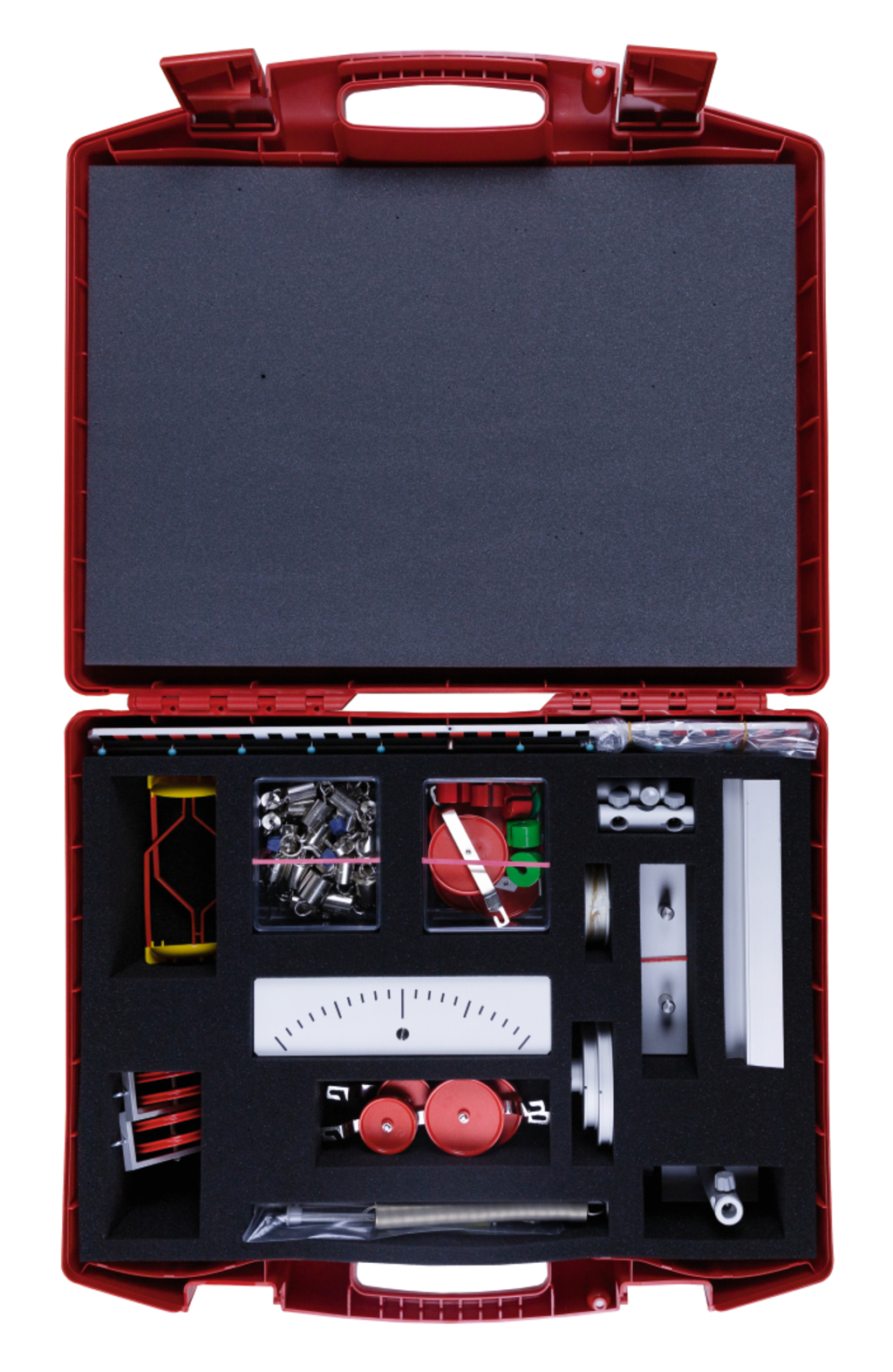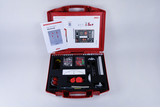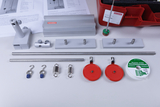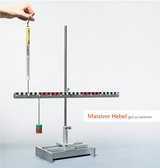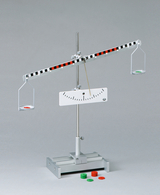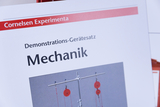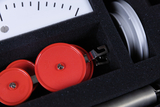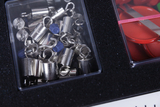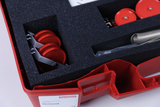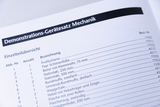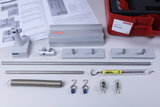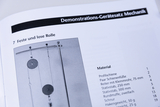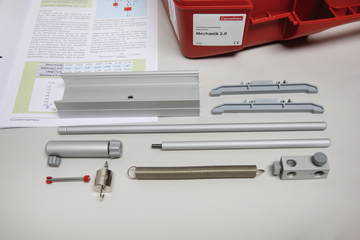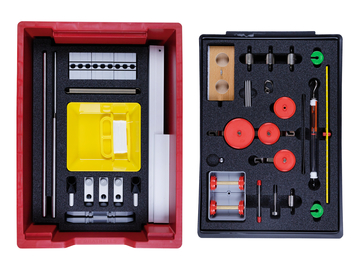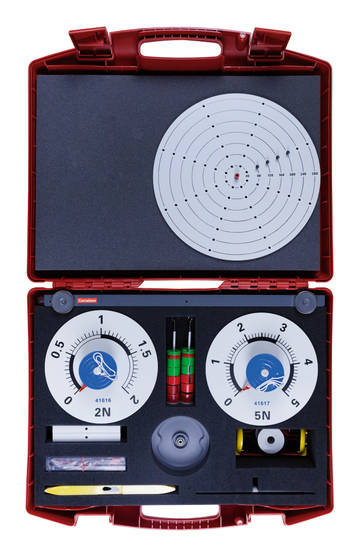Demonstration kit Mechanics
For the demonstration of various laws of mechanics with levers, pulleys, pulley blocks and dynamometers.
The experimental setup and the execution of the experiments can be done without any additional equipment in every classroom.
Detailed instructions for 10 experiments:
- Spring dynamometer
- Beam scale
- First-class lever
- Second-class and third-class levers
- Fixed pulley
- Moveable pulley
- Fixed and moveable pulley
- Pulley block (2 experiments)
- Multiple diameter pulley
Technical specifications
The students examine the relationship between weight forces and the comparison of masses on the beam scale.
The students examine the lever laws on the two-sided lever.
Introduction to how a spring force meter works and how it is constructed.
The students examine the lever laws on the one-sided lever.
The students examine the balance of power on a fixed pulley.
The students examine the balance of power on the loose roll.
The students examine the balance of power in the combination of loose and fixed rolls.
The students examine the laws of a pulley system.
The students examine the relationships in equilibrium after attaching masses.
The students examine the balance of power on the corrugated wheel.
- 2 × Scale pan, yellow with red holder
- 2 × Stand rod, 500x10 mmØ stainless steel
- 1 × Stand rod 250x10 mmØ stainless steel
- 1 × Rings with hook, set of 5
- 1 × Axis with 2 clamping bushon rod
- 1 × Dynamometer, 2 N
- 2 × Mass hanger, 10 g
- 2 × Slotted mass, 10 g, red
- 2 × Slotted mass, 10 g, green
- 3 × Slotted mass, 50 g, red
- 2 × Slotted mass, 50 g, green
- 1 × Spring 200 mm / 2,5 N
- 1 × Lever with bearing and pointer
- 1 × Scale on board with rod
- 1 × Multiple diameter pulley
- 1 × Fixed pulley, 2 hooks, 58 mm dia.
- 3 × Loose pulley, 58 mm dia. with one hook
- 2 × Pulleyblock,double sheave
- 1 × Demonstration cord 20 m, 1 mm Ø
- 1 × Rail, 200 mm
- 1 × Pair of feet for rails
- 1 × Rider, 75 mm with one bearing
- 1 × Bosshead, double
- 1 × Bosshead, triple
- 2 × Plastic box 105x90x50 mm
- 1 × Plastic case ca.540x450x150 mm
- 1 × Foam insert for 43080, 515x370x100 mm
- 1 × Storing diagram,Int.vers.(Demo-set Mechanics)
- 1 × Foam insert grey, knobbed515x360x30 mm
- 2 ×
- 10 ×
- 10 ×
